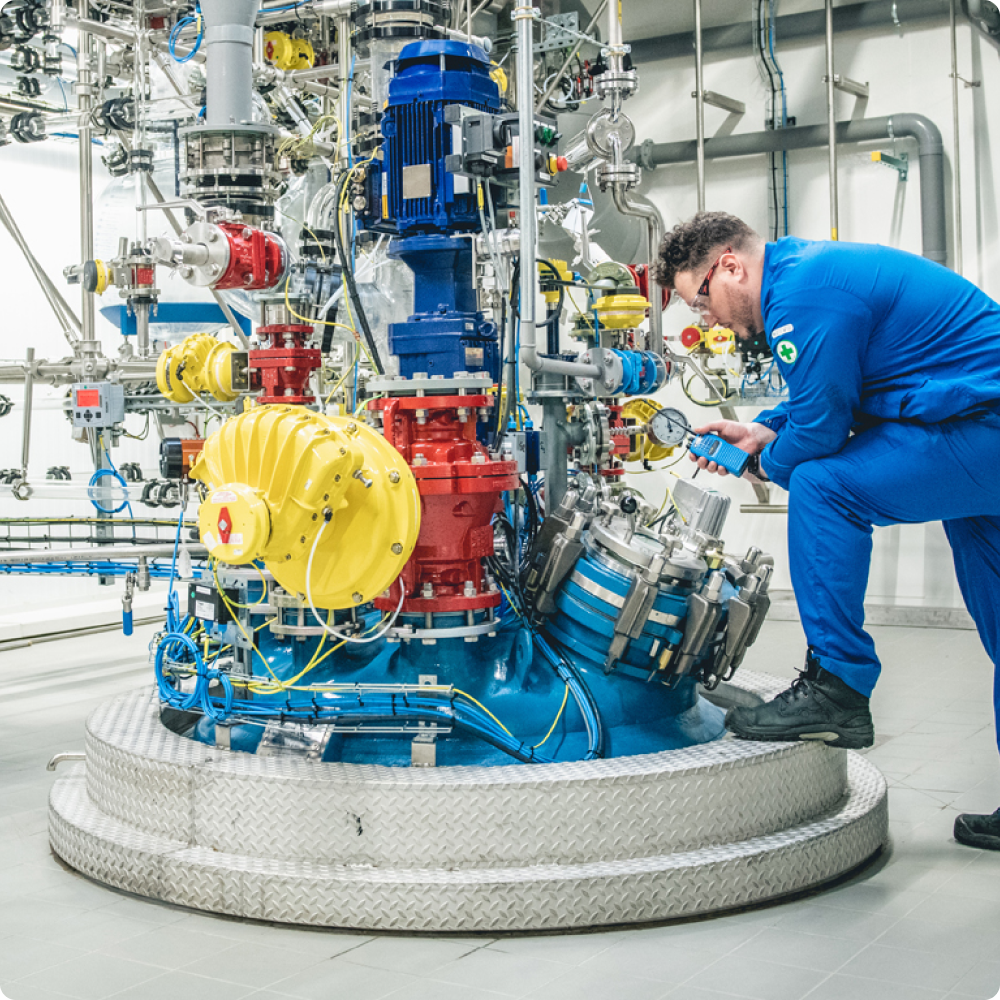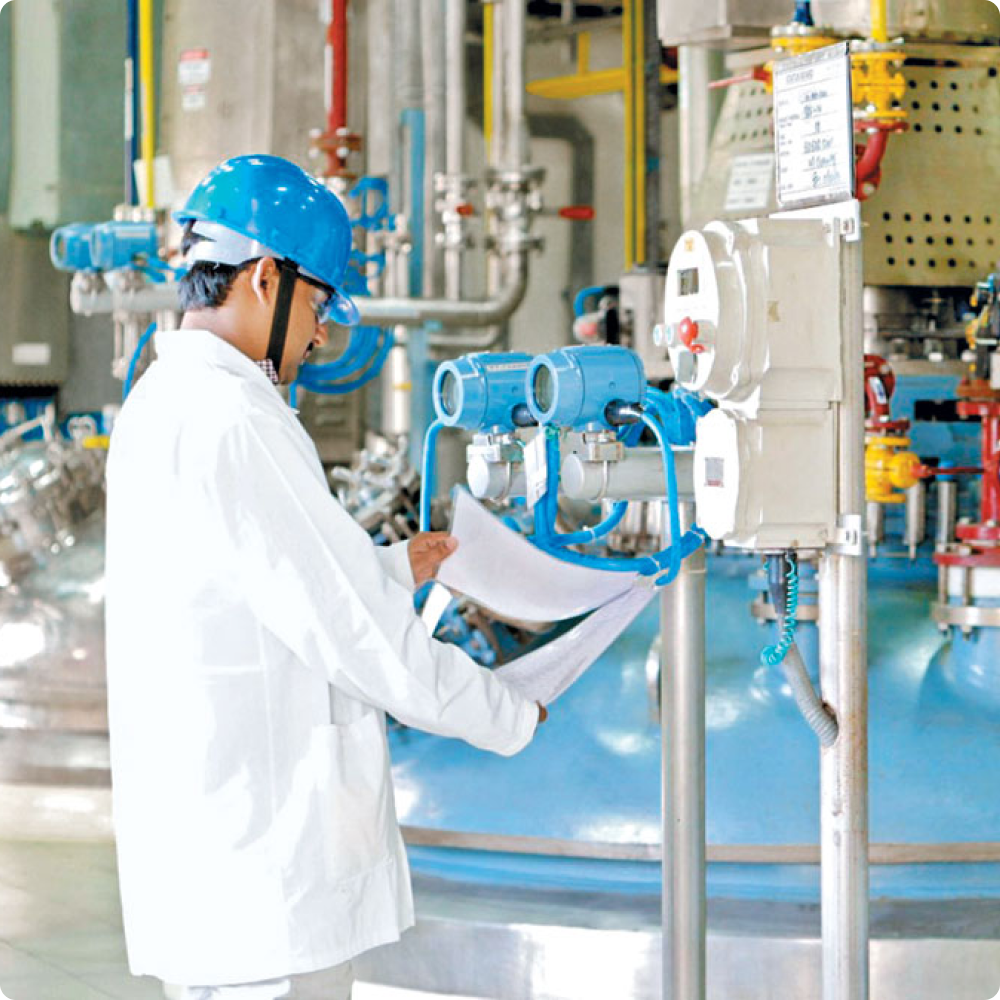Ajinomoto Omnichem partnered with Faktion to reduce energy costs of its Regenerative Thermal Oxidizer. Leveraging data-driven scenario analysis, Faktion optimized pressure settings, significantly cutting gas consumption while ensuring compliance with emission regulations.

Ajinomoto Omnichem (AOC) is a subsidiary of Ajinomoto Group, a Japanese multinational food and biotechnology corporation active in a wide variety of areas, including: seasoning & food, frozen foods, healthcare, chemicals, and semiconductors. AOC specialises in pharmaceutical CDMO (Contract Development & Manufacturing Organisation) services, agrochemical solutions, botanical extractions, and amino sciences. Ajinomoto operates a Regenerative Thermal Oxidiser (RTO) on its plant in Wetteren. In essence, an RTO is a combustion device that controls the emission of volatile organic compounds (VOCs) and other hazardous air pollutants (HAPs) by converting the toxic particles into CO2 and H2O.
Our Regenerative Thermal Oxidizer is responsible for 20% of our total natural gas consumption, representing a significant cost. We need a way to reduce this while maintaining compliance with emission regulations.
This conversion within the RTO takes place by burning natural gas to heat the contaminated air up to 800°C. Through a vent, contaminated air is drawn into the inlet of the RTO. The contaminated air flows through the RTO and is heated. At this moment, when the contaminated air is hot enough, the conversion takes place and the clean air leaves the outlet of the RTO. Obviously, making sure that the temperature is kept high enough to convert the VOCs and HAPs, significant energy in the form of natural gas. Ajinomoto’s RTO is operating 24/7, even when it’s not really needed. The RTO is responsible for around 20% of AOC’s total gas consumption, representing a significant cost. Ajinomoto is looking for a way to decrease the RTO-related energy bill and teamed up with Faktion to investigate this matter and find a data-driven solution to optimise energy use for the RTO.
Quantified key factors influencing energy consumption, including pressure differential, inlet flow, and toxic particle concentrations.
Simulated various scenarios to identify optimal pressure differential adjustments, balancing energy savings with emission compliance.
Predicted toxic particle output as a function of input, enabling precise identification of opportunities for flow reduction.
Developed a user-friendly tool to calculate optimized settings, providing actionable recommendations for real-time energy and cost savings.

Quantified key factors influencing energy consumption, including pressure differential, inlet flow, and toxic particle concentrations.

Simulated various scenarios to identify optimal pressure differential adjustments, balancing energy savings with emission compliance.

Predicted toxic particle output as a function of input, enabling precise identification of opportunities for flow reduction.
Ajinomoto is able to adjust the pressure differential, which is the difference in pressure between the right before and after the inlet fan of the RTO. This difference is created by a fan that is spinning. The fan and thus the pressure differential lead to air being sucked into the RTO. The bigger the pressure differential is, the bigger the volume of contaminated air that flows into the RTO. If the pressure differential is high, the RTO has to burn more natural gas in order to keep the temperature high and to process the increased volume of contaminated air. Hence, a higher pressure differential results in more natural gas use and thus an increased energy cost.
One might argue that Ajinomoto Omnichem could just lower the pressure differential, leading to less contaminated air flowing into the RTO and hence less natural gas use. However, AOC needs to comply to legal emission limitations. Exceeding this legal threshold would lead to a fine. The concentration of toxic particles in the contaminated air is not a constant, since the air is coming from different chemical processes that are by definition not constant. Generally speaking, lowering the inlet flow of contaminated air increases the concentration of toxic particles, making it difficult for the RTO to convert all particles. As a consequence, more unconverted particles are emitted, leading to potential emission breaches. Hence, there is a trade-off between pressure differential (or inlet volume) and legal emission breaches, ensuring that no one-size-fits-all solution is available to decrease the RTO’s energy consumption. The proposed solution entails a scenario analysis where recommendations can be extracted to decrease the energy consumption of the RTO.
In a first stage, Faktion conducted an exploratory data analysis to gain insights into the RTO data at hand. Together with AOC engineers, our ML engineers conducted a thorough analysis in order to understand the different factors that influence the energy consumption of the RTO before making recommendations for improvement. In essence, there are five interlinked building blocks towards an optimisation solution. In the exploratory data analysis, these five building blocks were quantified as they were needed as input for the scenario analysis. The following insights where found:
All these insights were combined in a scenario analysis. The logic behind the simulation is that gas consumption can be reduced by reducing the pressure differential. However, because of the trade-off between lowering the pressure differential and the risk of incidents, the question becomes: how much should we reduce pressure and when can we do that without causing emission incidents? In essence, the answer to this question boils down to predicting the outlet of toxic particles and comparing it to the legal limit. In periods of time where the outlet of particles is well below the legal boundary, we can calculate how much additional inlet hydrocarbons are allowed before the legal limit is reached, taking into account a certain safety threshold. This additional inlet can be converted into a flow reduction, as a lower volume increases the concentration of particles. To achieve this flow reduction, the pressure differential is decreased, leading to less energy consumption.